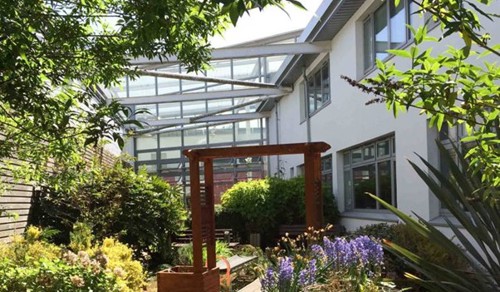An Insight to John Wheatley College
John Wheatley College was founded in 1989 and had its main campuses in Shettleston, Easterhouse and Haghill in Glasgow.
The college originally opened in 1989 within the former main building of Eastbank Academy (which had moved to a brand new building in 1986) supporting learning throughout the communities of east Glasgow, working in partnership with the city council's community planning teams, with Glasgow Regeneration Agency and Glasgow Life, with local housing associations and voluntary organisations to provide neighbourhood learning centres connected to the wireless Glasgow East Learning Network, the twin hubs for which were its main campuses. The opening of the Haghill Campus in 2007 meant the closure of the Shettleston Campus, the former Eastbank Academy buildings now being used as office space.
John Wheatley College provided courses in construction, hospitality, care, creative industries, art and computing, and provided outreach courses for adults across the Glasgow East Learning Network. It also ran a significant youth programme in the networked learning centres, and at the Bridge in Easterhouse, in partnership with voluntary and statutory youth work providers, supported by both the City Council and Glasgow Housing Association.
The college also supported people recently arrived in Glasgow who spoke English as a second language.
The John Wheatley College's campus in the East End of Glasgow represented a pioneering approach to sustainable design and community engagement. Situated within an area historically impacted by industrial decline and environmental degradation, the college's commitment to eco-friendly practices and social inclusion served as a beacon of hope for the region.
The decision to maintain multiple campuses reflects a commitment to serving the dispersed and 'territorial' community effectively. Moreover, the strategic design of the new campus aligned with the goals of the Clyde Gateway initiative, which aimed to bring employment opportunities to an area ravaged by the collapse of heavy industries and the resultant environmental degradation.
The eco-friendly features of the campus set new standards for educational buildings in Scotland. Through partnerships with organizations like Milnbank Housing Association, the college demonstrated a holistic approach to sustainability, encompassing environmental management systems, social housing initiatives, and collaborative forums for sustainable development.
Emphasising sustainability and social inclusion as key drivers, the college's mission extended beyond traditional education paradigms. Described as a 'college without walls,' its primary focus is on making education accessible to those who have been underserved by traditional routes, while also contributing to local economic, social, and physical regeneration efforts.
The innovative design of the campus integrated energy-efficient technologies such as water harvesting systems, biomass boilers, and passive ventilation, minimising its environmental footprint while maximizing comfort and functionality. Furthermore, the campus's accessibility via public transportation options reduced reliance on cars, promoting a more sustainable mode of commuting.

In terms of learning and teaching infrastructure, the campus boasted state-of-the-art facilities including wireless connectivity, loanable laptops, and interactive teaching tools. Accessibility features such as hearing loops and mobile fume extractors ensured that all students could fully engage with their learning environment.
The attainment of the BREEAM Excellent standard underscored the college's commitment to sustainability and longevity. With a design lifespan of 60 years, the campus is poised to serve future generations while continuing to evolve in response to changing needs and environmental challenges.
John Wheatley College's campus in the East End of Glasgow represents a transformative model for sustainable education and community development. By prioritizing environmental stewardship, social equity, and long-term viability, the college set a precedent for educational institutions seeking to make a positive impact in their communities.
Case studies / John Wheatley College



